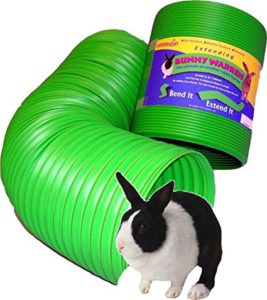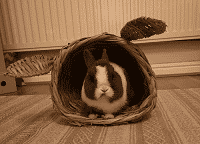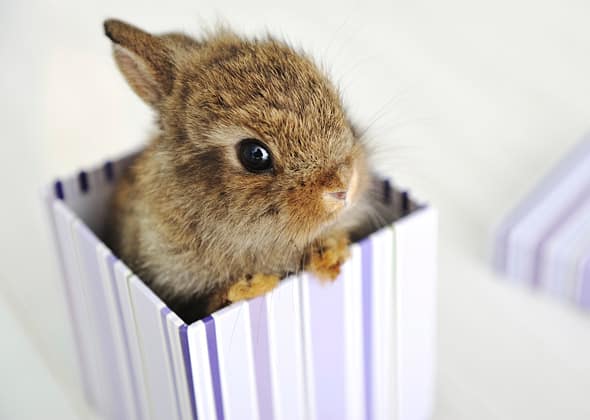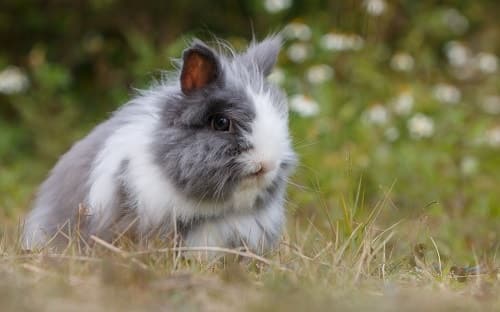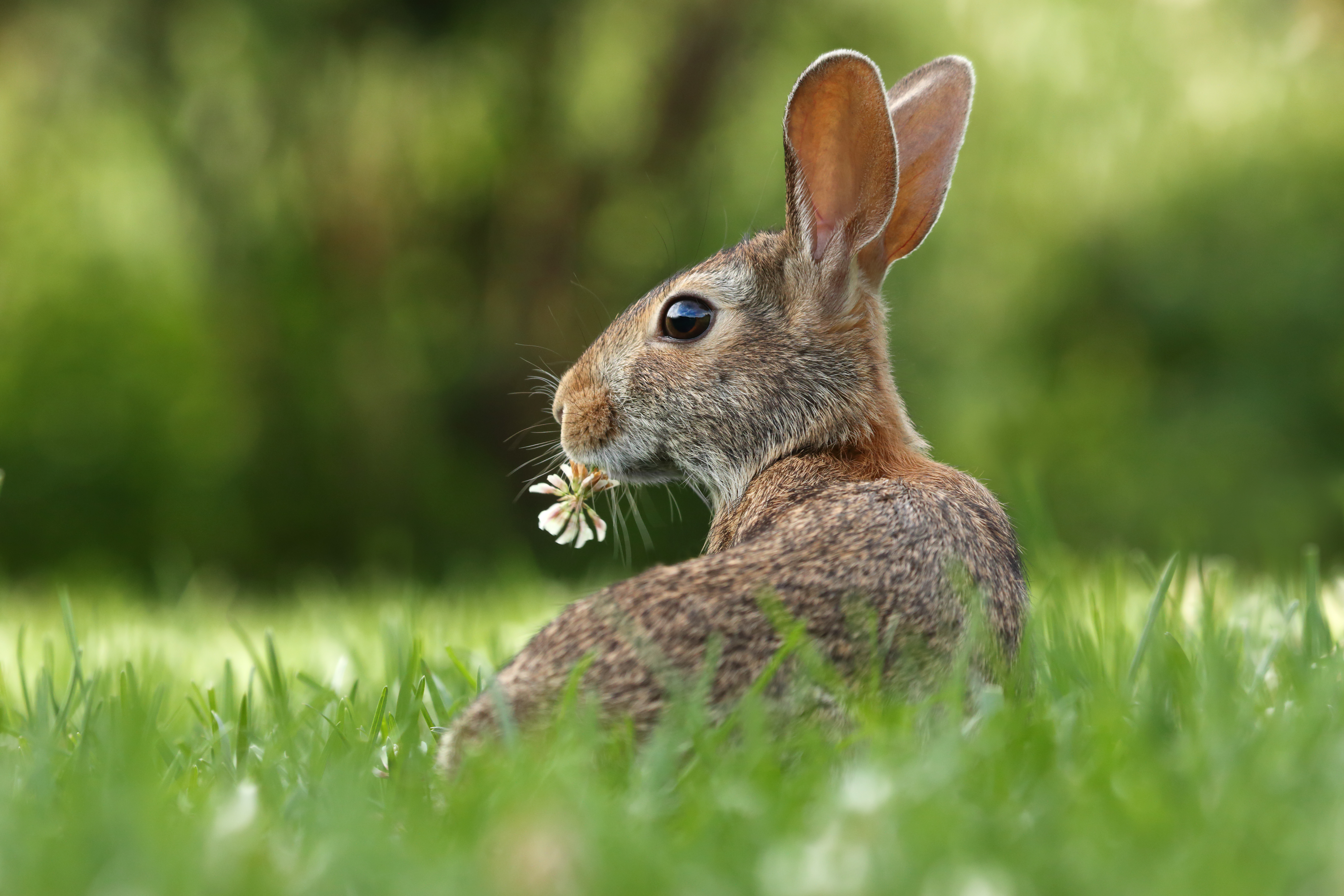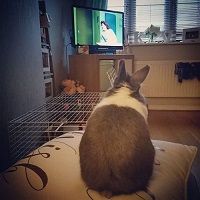Rabbits are complex creatures and there are tonnes of things to learn about them.
So we jotted down a mammoth list of rabbit facts we’ve covered so far on BunnyLowdown in – hopefully – an easily digestible way for you to check out.
You might be surprised about how many rabbit facts on the list you already know, but I bet there are a couple of interesting that will really take you by surprise.
Here’s the list – enjoy!
Table of Contents
Rabbit Facts: What are Rabbits Known as?
- A girl rabbit is called a doe.
- A boy rabbit is called a buck.
- A baby rabbit is called a kit or a kitten.
Rabbit Facts: About Rabbits
- Rabbits belong to a species known as lagomorphs, not rodents.
- There are over 180 different breeds of rabbit throughout the world.
- Pet Rabbits which only live indoors are known as House Rabbits.
On that note, if you’re looking for an indoor or outdoor hutch for your little fluff monster, check out the below options:



- Rabbits can be litter trained.
- Rabbits typically have a lifespan of around 10 years.
- Wild Rabbits live underground in Burrows.
- A group of Burrows is known as a Warren.
- Wild Rabbits like to live in groups.
- And much like Wild Rabbits, Pet Rabbits are social creatures and like the company of other bunnies. When getting a pet rabbit, it’s very much worth considering getting two rabbits – a neutered male and a neutered female is thought to be the optimal combination.
- Rabbits are usually born without fur.
- It’s illegal to buy or sell a baby rabbit under the age of 8 weeks old.
- After birth in the wild, mother rabbits will leave the nest and only return every 24 hours.
- For baby rabbits, the best way to check if a baby rabbit is being nourished correctly is to weigh them every day to ensure they’re gaining weight.
- More than half the rabbits in the world live in North America.
- Rabbits spend a considerable amount of time grooming themselves.
- Rabbits have four different types of fur: Normal, Rex, Satin and Angora fur.
- Rabbits are exceptionally fertile. A doe is usually pregnant for around 30 days and can carry a litter of between 4 to 12 kits.
- As mentioned in our Should I Neuter my Rabbit? article, neutered and spayed rabbits can live longer than non-neutered rabbits.
- Neutered rabbits are less destructive.
- Neutered rabbits living with same-sex rabbits are less prone to fighting.
- Neutering your pet bunny, eliminates (or at least greatly reduces) reproductive cancers.
- In male rabbits, neutering prevents sexual aggression.
- In male rabbits, neutering prevents spraying behaviour.
Rabbit Facts: Rabbit Food
- Rabbits are herbivores.
- Rabbits require a considerable amount of water intake per day.
- Rabbits eat their own poo to get additional nutrients and to assist with digestion.
- A Rabbits diet should mostly consist of Hay. In fact, it should be at least 80% of their diets.
- Fruit and vegetables should be considered treats for Rabbits and they should only be given a small handful per day.
If you want to find out more about Rabbit diet and what they can eat, then go check out our 66 items ultimate rabbit food list article.
If you need more information about what you absolutely shouldn’t feed your pet bunny, check out our 65 Foods You Shouldn’t Feed Your Bunny article.
One final thing on Rabbit food…
Did you know that you can subscribe to Rabbit Food on Amazon? Not only can you get your rabbit food automatically ordered and sent out to you each month, but you get it at a 5% discount. Pretty cool, right?
Honestly, I love it. The price is great and I don’t have to worry about forgetting to buy Ron’s food every month.
A time saver and a life saver!
If you’re interested, you can check it out using the link below:

Rabbit Facts: Rabbits Communication
- Rabbits have their own way of communicating with humans.
- Rabbits have 14 different ways to tell humans they’re happy and content.
- Rabbits have 4 main ways to tell humans they’re unhappy.
- Rabbits communicate with each other with a series of body movements and muscle clenches.
- When a rabbit zooms around really fast and jump, twisting their bodies in the air whilst doing so (also known as binkying) is a sign they’re happy and playful.
- If your bunny licks you, it means they are comfortable and that you’re very special to them.
- When a rabbit rubs their chin over something, it’s a sign they’re marking their territory. Rabbits have special glands under their chins which allows them to rub their scent on whatever object they’re “chinning”.
- Rabbits purr or make a soft tooth clicking noise when they’re content. Typically, this occurs when you’re stroking the little fluff machine.
- As a sign of mating, rabbits circle their prospective mate and make honking noises.
- If a rabbit does this to a human, it’s a sign of playfulness and the fact they want you to play with them.
- When they’re comfortable, rabbits lie on their bellies with their legs outstretched.
- Bunnies also flop on their sides as a sign of contentment.
- When requesting attention from humans, rabbits will nudge you with their noses.
- Nose nudging could also mean that the rabbit just wants you to move out of the way.
- As another request for attention from their humans, rabbits will also tug on their clothes.
- Rabbits will also jump their human’s laps when they want attention.
- Rabbits thump to warn of danger. It’s an instinct that goes back to the wild when rabbits try to warn everyone in their burrow of danger.
- When they’re angry or stressed, rabbits growl.
- When caught by a predator, rabbits produce a chilling scream or squeal and when all else fails, they go limp.
- When a rabbit is unhappy, they may turn their backs to you and flick their back legs at you, effectively “kicking dirt in your face”. This comes from the wild, where rabbits will do this to distract and momentarily blind predators.
For more information on Rabbit communication, check out our related articles: Understanding Rabbit Behaviour and 4 Signs You Have an Unhappy Bunny.
Rabbit Facts: Rabbit Powers
- Rabbits can turn their ears 180 degrees, which allows them to more accurately pinpoint any sounds.
- Rabbits with longer ears have the added advantage of cooling them down during high temperatures.
- Rabbits have 360-degree vision.
- Rabbits have a total of 28 teeth.
- Rabbits teeth never stop growing, they get worn down by the process of chewing their food or toys.
- Because of this, pet rabbits require plenty of rabbit toys for them to grind their teeth and chew on. Toys are also a good idea for a rabbit because they act as a substitute for your little monster chewing on all of your wooden furniture.
- Rabbits can’t vomit; their digestion system is built in such a way that it’s impossible for it to go in the opposite direction.
On that note, here are some of the toys we’ve bought – and continue to buy – for Ronnie for him to play with and chew on to help grind his teeth down:

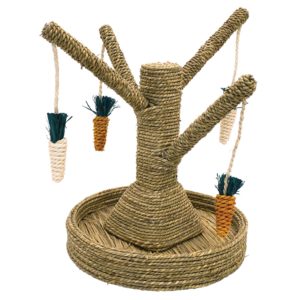
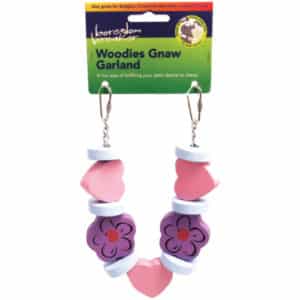
Rabbit Facts: Rabbit Trancing
- There’s a way to hypnotise or trance a rabbit by placing them on their backs and gently stroking their back legs.
- BUT trancing rabbits is actually harmful! I’ve seen people do this to make it easier to cut their bunnies nails OR it’s been falsely advised to them in order to create a bond between bunny and owner. However, the opposite is true.
- When rabbits go into this tranced state, it’s called tonic immobility and it’s an instinctive reaction dating back to their days in the wild to protect them from predators. The idea is that when rabbits are captured by predators, they pretend to be dead so the predator will release them.
- Studies have determined that when tranced, rabbits have the same psychological responses as those experienced during a traumatic event.
So…how did we do?
That’s our mammoth list of rabbit facts…how did we do? Did you know most of those facts? Were there any that really surprised you?
Get in touch with us on our Facebook page – we would love to hear your feedback!
If you like what you see, [popup text=”click here sign up to the BunnyLowdown mailing list now to get an email every time a new article is published”]!
